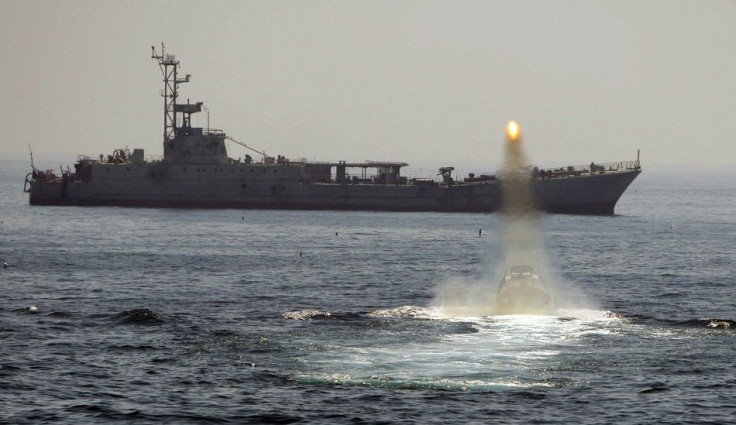After Iran Ship Seizure, US Navy Decides To Accompany US Ships In The Strait Of Hormuz

Two days after Iran seized a Marshall Islands-flagged cargo ship in the Strait of Hormuz, U.S. Navy ships have begun accompanying U.S.-flagged ships through the region. The Maersk Tigris, which remains anchored in Iranian territorial waters, was taken Tuesday in the Persian Gulf, starting a diplomatic and military scramble with U.S. Navy ships arriving to monitor the scene.
“In general, U.S. naval forces will now accompany U.S.-flagged vessels that desire such support during transits of the Strait of Hormuz,” said Cmdr. Kevin Stephens, a spokesman for the Navy’s Fifth Fleet. “U.S. naval forces will transit the strait along with and nearby such shipping, although it is not as though they’ll necessarily be in some sort of formation.”
U.S. Naval Forces Central Command will coordinate with shipping companies that have U.S.-flagged ships to enable safe passage through the small strait, where the full width of the shipping lane is only about 20 miles (30 km). A large portion of the world's oil transits on tankers through the strait, which connects the Persian Gulf with the Indian Ocean.
The Maersk Tigris was seized while navigating in international waters. According to U.S. military officials, the Iranian Revolutionary Guard navy, which is separate from the Iranian navy, ordered the Tigris to change course and enter Iranian waters. After the crew refused the order, the Iranian ship fired warning shots. The Tigris, which was on its way to Dubai, United Arab Emirates, changed course. Iranian officials say that the ship was being detained because of unpaid debts.
A second U.S. official, speaking to Defense One, stressed that the Navy would not be escorting, but accompanying the U.S. flagged ships. “Accompanying is basically a step down from escorting,” said the official. “The U.S. Navy ships will be in the same general area as the U.S.-flagged merchant vessels and are there to ensure a safe flow of maritime traffic in the Strait of Hormuz.”
The presence of a strong Western naval contingent in the area is nothing new. The U.S. and a coalition of 25 allied countries have been patrolling the waters of the Gulf of Aden, Red Sea and the Gulf Of Oman since 2002. A separate task force patrols the waters of the Gulf.
Navy Times reported that U.S. Navy ships in the region include the coastal patrol ships Whirlwind, Monsoon, Typhoon, Thunderbolt and Firebolt; cruiser Normandy; the destroyers Milius, Farragut, Winston S. Churchill and Paul Hamilton; the aircraft carrier Theodore Roosevelt; and the minesweeper Devastator.
© Copyright IBTimes 2024. All rights reserved.






















